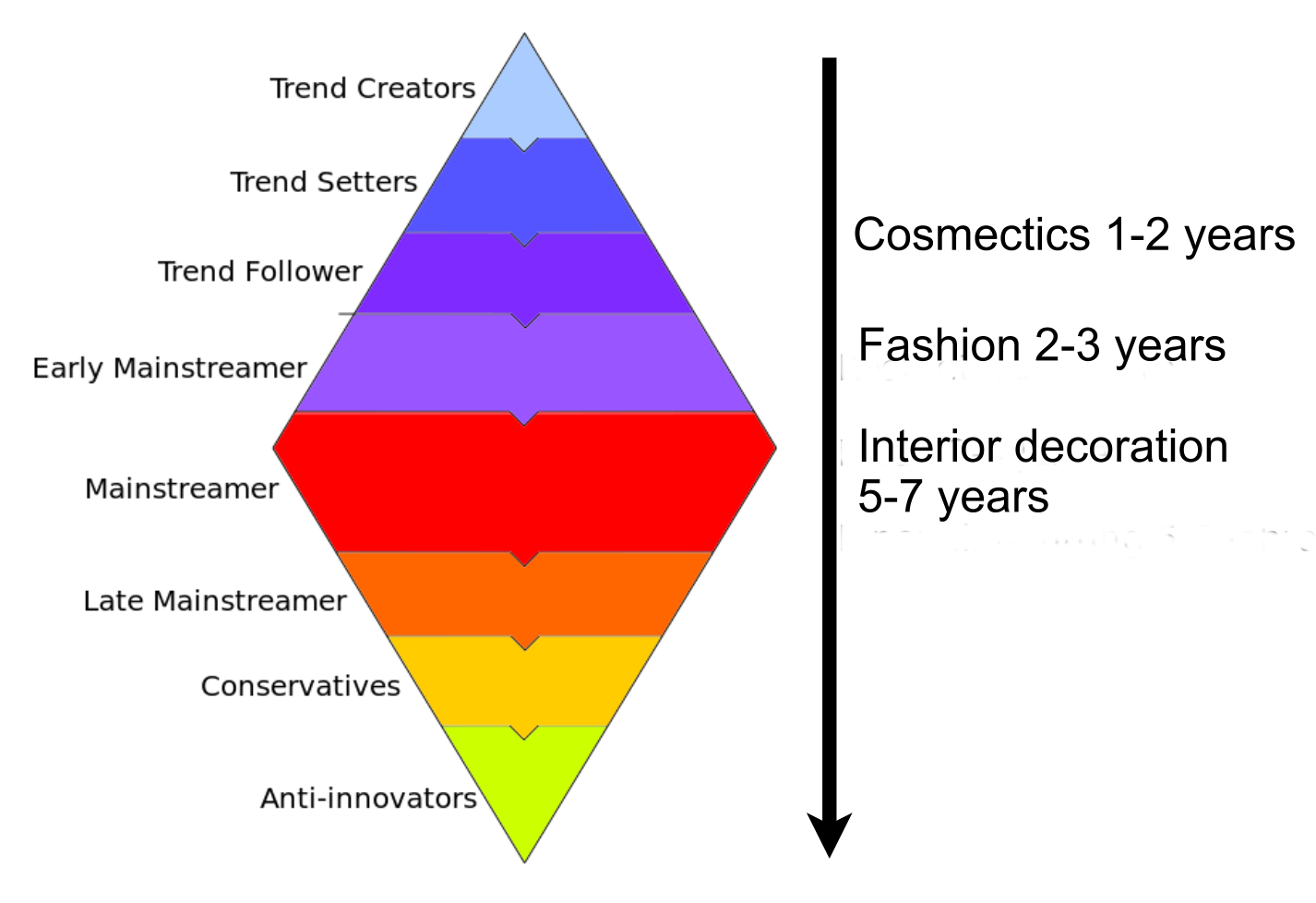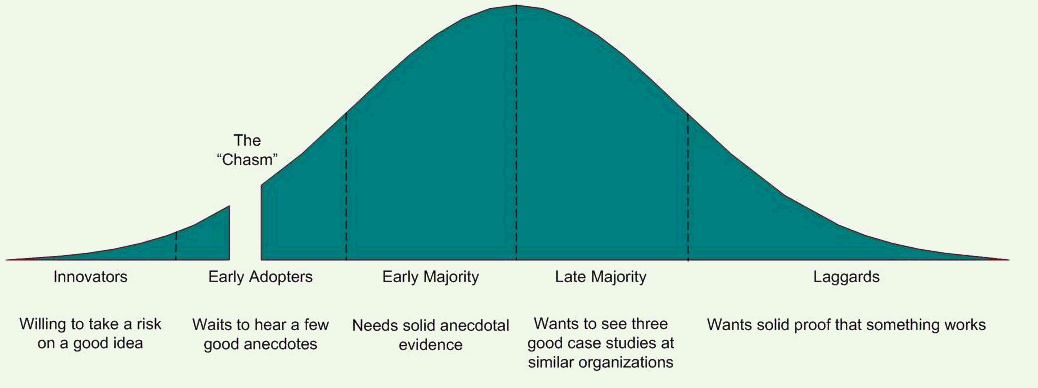Nobody needs that
Adaption of innovation
Dr. Sasha Göbbels
http://slides.technologyscout.net/dbks-en/What's the deal?
WOW, THIS IS COOL!!11eleven
Nobody needs that.
I have no idea for what this is good for!
Foundation: Sociology
Sociology researches all aspects of societal coexistance of people in communities and societies.Source: Internet
Everett Rogers
Diffusion of innovations, 1962
Henrik Vejlgaard
Anatomy of a trend, 2007

Marketing: Geoffrey Moore
Crossing the chasm

Classification of innovations
- Timeline of innovations: continuously vs. disruptive
- Levels of decisions: commercial vs. cultural
- Expectations of players: visionary vs. pragmatic
Too bad: almost never "pure" forms!
Mechanism of adaption
Classical Approach
- Players decide individually
- Decision after weighing the advantages and disadvantages
- cost-of-change
Disruptive innovations
Marketing: Geoffrey Moore ↝
- Change communication at the gap:
- Left/before (Visionary): Coolness and potential
- Right/after (Pragmatic): Narrative about practical application
- Define target markets
- One segment as a springboard for the next
Mechanisms of adaption
Criticism of continuous theory
- The independent decision-making process can never lead to an "s curve"
- Result are "r curves"
- Combination of two methods creates s curves:
- individual cost-of-change/benefit considerations
- "biased transmission"
What's all this for?
- Technical innovations like wearables are disruptive
- The behavior of some people may seem strange to observers. Why?
- How can one understand how disruptive innovations conquer a population or not??
- Can one use the understanding of the processes?
What's that to do with computer science?
- Observe what's happening
- Create models for the mechanisms at work
- How to approve a model?
Simulation with cellular automata
Robert Axelrod, 1997
Robert Axelrod in 1997 developed a system, consisting of a net of cellular automata, that simulate a population. Each individual has a set of features, represented by a tupel or vector of numbers. Individuals take on features from their neighbors by interactions.Axelrod Model
Algorithm
- Create a field of individuals (e.g. 50×50) and set features
- Select one cell randomly
- Select a random neighbor (N,S,E,W)
- Calculate similarity of participants, from this calculate a probability for interaction
- If likely: take on a randomly selected feature from the neighbor
- Back to step 2. as often as you like
Axelrod Model
Possible end states
- Complete homogeneity, all individuals are equal
- Few large areas, called cultural domains
- Complete chaos
Axelrod Modell
Size: 30×30, No. of features: 3, max. value: 6, Threshold: 0,1, 100.000 Iterations. Built with p5.jsAxelrod Model
Variations
- Rejection if too few similarities:
a feature shares by both individuals is changed for one of them - Additional influence:
- Mass media
- Social networks
- biased transmission
- long-range interactions (Small World Model, Jon Kleinberg)
References 1
- Everett Rogers, "Diffusion of innovations", 1962-2003
- Henrik Vejlgaard, "Anatomy of a trend", 2007
- Martin Raymond, "The Trend Forecaster's Handbook", 2010
- Robert Axelrod, "The Dissemination of Culture", J. Confl. Res., Vol. 41 Nr. 2, 1997
- Joseph Henrich, "Cultural Transmission and the Diffusion of Innovations", Am. Anthropologist 2001, 103(4) 992-1013